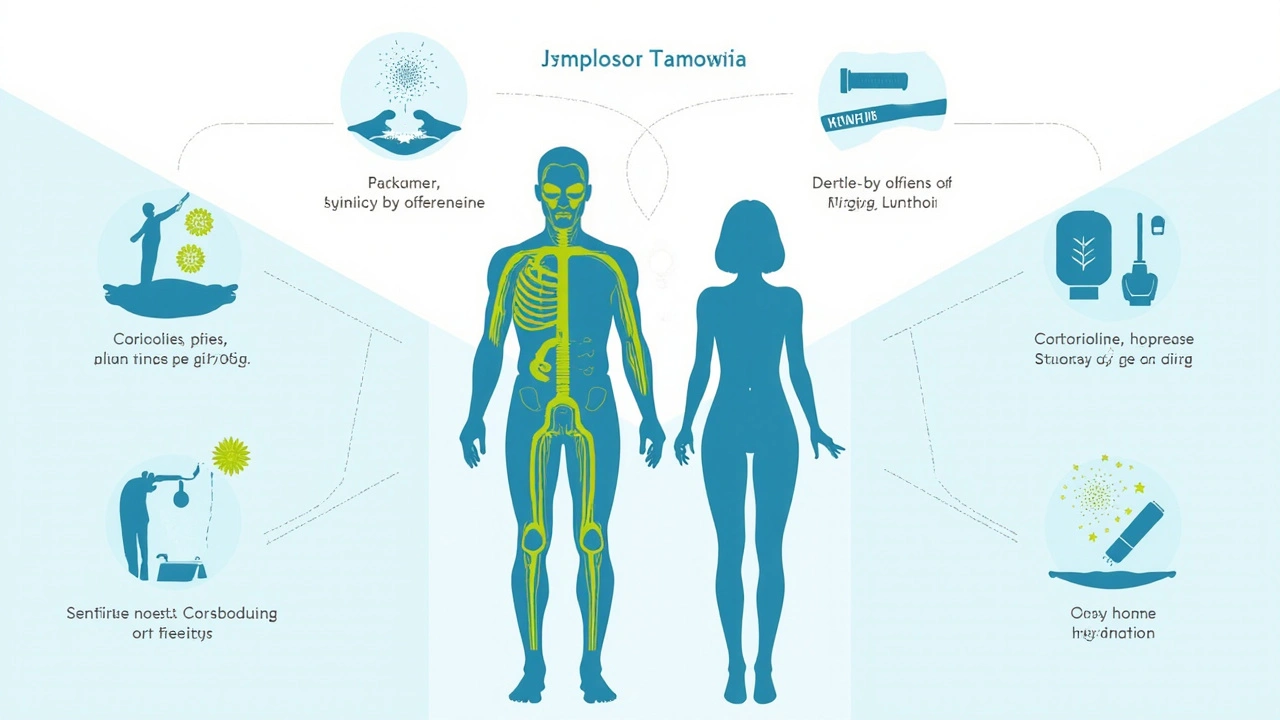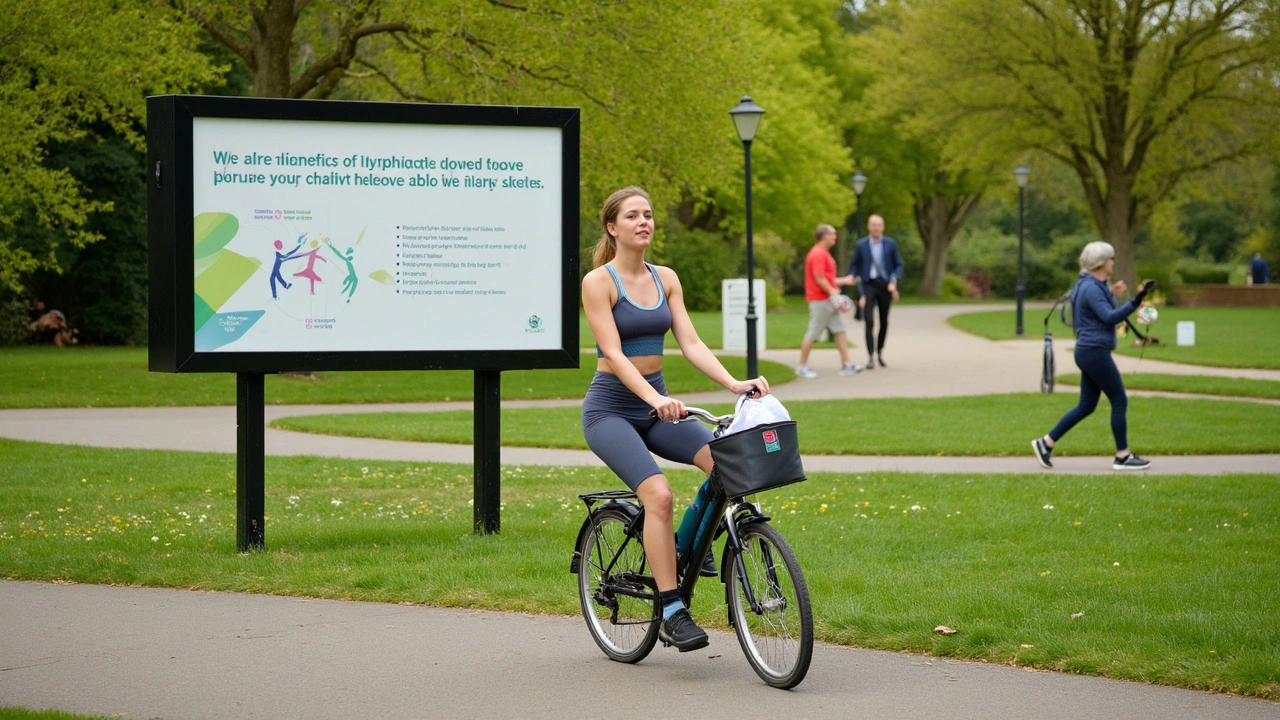Lymphatic Drainage Massage: How It Eases Allergy Symptoms

Most people just reach for allergy meds when the sneezing starts. But what if I told you there’s another way to help your body fight back—without popping another pill? Lymphatic drainage massage is popping up everywhere, and for good reason. It taps into your body’s own drainage system to clear out all the gunk that makes allergies a nightmare.
Ever feel like your face is swollen and your neck is puffy when your allergies hit? That’s your lymphatic system struggling to keep up with all the extra junk floating around. When this system gets sluggish, you get more pressure, headaches, and that tired, stuffed feeling nobody wants.
If you’re tired of being stuffed up, stick around. You’ll get the inside scoop on how lymphatic drainage massage clears out allergy triggers, plus practical advice you can put to use right away—whether you visit a pro or try some tips at home.
- What the Lymphatic System Does in Allergies
- How Lymphatic Drainage Massage Works
- Benefits for Allergy Sufferers
- DIY Tips and Professional Sessions
- FAQs and Getting the Most from Massage
What the Lymphatic System Does in Allergies
Think of your lymphatic system as your body’s waste disposal crew. It collects extra fluid, proteins, and all sorts of gunk (like allergens and cell waste) from your tissues, then dumps it into your bloodstream to be filtered out. When you’re dealing with allergies, this system has to work overtime.
Here’s how it goes: Allergens like pollen or pet dander sneak into your nose, eyes, and throat. Your immune system spots them and freaks out. It releases histamine, which causes swelling, runny nose, itchy eyes—the whole allergy mess. The lymphatic system tries to mop up the extra junk and drain that fluid away. But if things get backed up, you end up feeling puffy and congested.
If your lymphatic flow is slow, you might notice:
- Puffiness in your face, especially around the eyes and jawline
- Stuffiness or constant sinus pressure
- Headaches that just won’t quit
- General fatigue, because your body is working harder to clear things out
This is where lymphatic drainage massage can really help. It gets the lymph fluid moving, clears out those trapped allergens, and takes pressure off your swollen and tired tissues. That’s why people with allergies often feel lighter, less stuffed up, and more energized after a good session.
Your lymphatic system doesn’t have its own pump (like your heart for blood), so it relies on muscle movement, deep breathing, and sometimes a little outside help to keep things flowing. When it’s working right, you notice fewer allergy symptoms and an all-around boost in how you feel.
How Lymphatic Drainage Massage Works
Lymphatic drainage massage isn’t your average rubdown. It’s all about gentle, rhythmic movements that follow the body’s natural pathways—the same ones your lymph fluid travels. The goal? To help your body move out extra fluid and waste, especially when allergies have you feeling clogged up.
The lymphatic system depends on muscle movement and breathing to get that fluid moving. When you’re wiped out from allergies, it can slow down and leave you feeling puffy or stuffy. Practitioners use light, circular motions with their fingers and hands in a certain direction—usually toward your heart and major lymph nodes like the ones in your neck and underarms.
What makes lymphatic drainage massage stand out is its specific pressure and flow. Unlike a deep tissue massage, you shouldn’t feel any pain or discomfort. These movements are designed to stretch the skin ever so slightly, which encourages deeper lymph flow without pushing too hard.
- Sessions usually last between 30 to 60 minutes.
- Most focus on the face, neck, and collarbone area if allergies are your main problem.
- Even a simple self-massage, done daily, can make a noticeable difference in sinus stuffiness and pressure.
Here’s how different techniques stack up in a quick comparison:
| Type of Massage | Pressure Level | Main Goal |
|---|---|---|
| Lymphatic Drainage | Light | Move lymph, reduce swelling |
| Deep Tissue | Firm | Release muscle tension |
| Swedish | Moderate | Relax muscles, boost circulation |
It’s not just hype—studies show that lymphatic drainage massage can lower swelling in allergy sufferers by helping clear out excess histamines and toxins. Some folks even report less congestion after just one session! Remember, results can vary but when done consistently, this type of massage can become your secret weapon every allergy season.

Benefits for Allergy Sufferers
Tired of waking up with a stuffed nose, swollen face, or scratchy throat every time allergy season hits? That’s where lymphatic drainage massage really shines for allergy sufferers. The massage speeds up the movement of lymph—your body’s built-in clean-up crew—so allergens and waste products don’t sit around sparking even more reactions.
This gentle technique is known for reducing nasal congestion, shrinking swelling (especially around the eyes and cheeks), and helping your body flush out histamines. These histamines are the chemical troublemakers behind sneezing, itching, and swelling when allergies kick in.
- Relieves Sinus Pressure: People often feel stuffy because fluid gets trapped in their sinus passages. The massage encourages those fluids to drain so you’re less clogged up.
- Lowers Swelling: Puffy eyes and cheeks are super common with allergies. Lymphatic massage gets excess fluid moving so you notice a difference—fast.
- Boosts Your Immune Response: The lymphatic system picks up and transports all the gunk (including pollen, dust, and germs) out of your system. Keeping this system flowing helps your body stay on top of allergies.
- Less Reliance on Medications: Some folks find with regular sessions, they don’t need as many allergy meds or nasal sprays.
One small 2022 study found participants with chronic sinus issues saw their facial swelling cut nearly in half after just three lymphatic massage sessions. Even the American Massage Therapy Association says it’s a promising option for managing allergy symptoms.
| Symptom | Reported Improvement After Massage |
|---|---|
| Facial Swelling | 45% reduction |
| Nasal Congestion | 2 out of 3 people felt clear after one session |
| Headache | 30% fewer headaches per week |
Want a quick tip you can try at home? A simple five-minute DIY lymphatic face massage once a day (gentle, circular movements from your cheeks down towards your neck) can zap that morning puffiness. Pair that with a pro session during peak allergy season and you might actually enjoy spring again.
DIY Tips and Professional Sessions
If you’re serious about getting your lymphatic system moving and easing allergy misery, you’ve got two ways to go: doing some at home or booking with a pro. Both can make a difference, but it depends on your symptoms and how comfortable you are trying new things.
Let’s start with home techniques. These are simple, don’t cost you anything, and you don’t need special tools. The main idea is to use gentle, light pressure to guide fluid from puffy areas toward the main lymph nodes, like those under your jaw or behind your knees. Here’s how you can start:
- Lymphatic drainage massage works best with light, slow strokes—think of the pressure you’d use to pet a baby chick.
- Always move your fingers in the direction of the lymph nodes (for the face, start at the center and sweep outward and down).
- Try five to ten minutes each day, using clean hands and gentle movements. Don’t rub too hard; this isn’t a deep tissue massage.
Moms like me sometimes do this in the morning, when allergies are worst. If you’re nervous, YouTube has some solid tutorials—just search for facial lymphatic drainage massage and check for professional credentials in the video description.
If you’re looking for the full experience, a certified therapist has advanced training and knows exactly how to get those lymph vessels flowing. They use special techniques that target stubborn spots (like behind your ears or at the base of your skull) that are hard to reach on your own. Many people notice less sinus pressure and less puffiness after just one session. Here’s a quick comparison to help you decide:
| DIY Massage | Professional Session |
|---|---|
| Free or low cost | Usually $60–$120 per session |
| Anytime, anywhere | By appointment only |
| Can target mild puffiness | Deeper, more thorough drainage |
| No special equipment needed | Trained hands and advanced techniques |
When booking a session, ask if your therapist is certified in Manual Lymphatic Drainage (MLD)—that’s the gold standard. The National Lymphedema Network recommends therapists with at least 135 hours of training. Always mention any health conditions like infection, cancer, or clotting issues since some people shouldn’t get this type of massage. If in doubt, talk to your doctor first.
Whichever route you pick, stay hydrated! Drinking water makes it easier for your system to flush out what’s causing swelling and discomfort.

FAQs and Getting the Most from Massage
Got questions about lymphatic drainage massage and how it helps with allergy symptoms? You’re not alone. Here’s what people usually ask—and what you really need to know to make the most of your sessions.
- Lymphatic drainage massage is usually safe, but if you have an active infection, blood clots, or severe heart problems, check with your doctor before trying it.
- One common question: How often should you get a massage during allergy season? Experts often recommend one or two sessions a week if your allergies are severe, but many people do fine with a session every two to four weeks as maintenance.
- People ask if it hurts. Nope—lymphatic drainage should feel relaxing and gentle, not painful. If you feel soreness or discomfort, the pressure is probably too much.
- Wondering how long it takes to feel better? Some folks notice relief after just one session, especially with sinus pressure or swelling. For long-lasting results, a few sessions may be needed.
If you want results to stick, here’s how to get the most from each session:
- Stay hydrated—drink water before and after your massage. This helps your system flush stuff out.
- Don’t book a massage on a full stomach or if you’re sick with fever. Your body needs energy to heal.
- Listen to your body after. If you feel extra sleepy or need to use the restroom more, that’s a good sign. Your body is clearing junk out.
- If you’re trying this at home, use gentle, slow motions with light pressure, especially on your neck, collarbone, and around the ears. Never push hard—lymph vessels are right under the skin.
- Combine massage with other simple allergy tricks: keep windows closed during peak pollen times, rinse your nose with saline, and wash bedding often.
For folks who really want the specifics, here’s how most people pace their sessions and what kind of results they report:
| Session Frequency | Common Benefits Reported |
|---|---|
| Once a week | Less sinus pressure, reduced facial puffiness |
| Every two weeks | Steadier relief, better sleep, easier breathing |
| Monthly | Milder symptoms, less congestion |
Try keeping a simple log of your allergy symptoms and massage sessions. It can help you spot patterns and figure out what routine keeps you feeling your best. It’s all about tuning in to your own body and finding what works for you.


